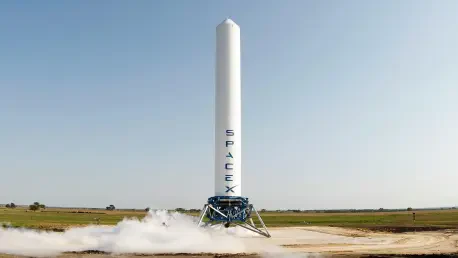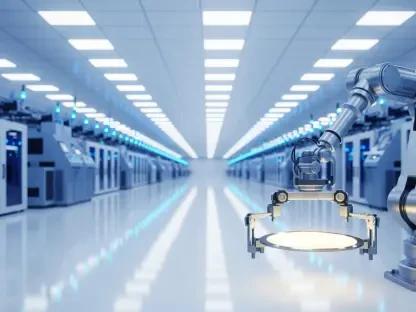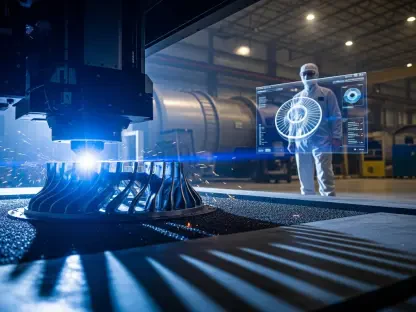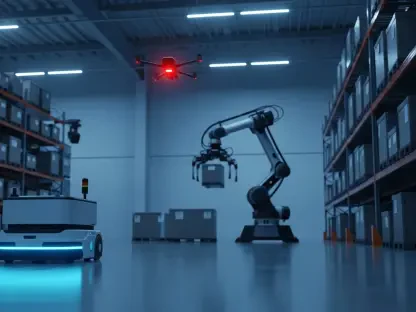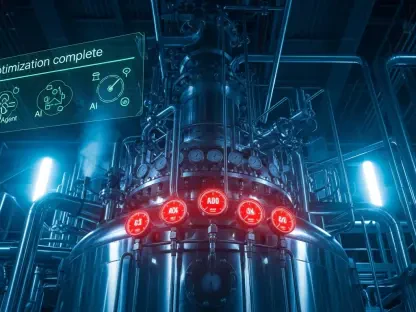The aerospace industry stands at a critical juncture, with rocket propulsion technology becoming the linchpin for advancements in defense, space exploration, and commercial aviation. As global investments in space infrastructure and defense soar, a staggering projection of $1 trillion by 2040 underscores the urgency for innovative solutions. Amid this dynamic landscape, a Houston-based startup, Venus Aerospace, has emerged with a groundbreaking approach to propulsion that could redefine high-speed travel and exploration. This report delves into the current state of the rocket propulsion sector, examines Venus Aerospace’s pioneering contributions, and explores the challenges and opportunities that lie ahead in this transformative field.
The Current Landscape of Rocket Propulsion and Aerospace Innovation
The rocket propulsion industry serves as the backbone of modern aerospace endeavors, powering everything from military defense systems to ambitious space missions and commercial air travel. Its importance cannot be overstated, as propulsion technology directly influences mission success, cost efficiency, and strategic capabilities across multiple domains. With the global aerospace and defense propulsion systems market valued at over $260 billion in 2022, the sector continues to drive technological progress on a massive scale, shaping the future of human exploration and national security.
Key players in this arena include established giants like Lockheed Martin, whose decades of expertise have set industry standards, alongside a wave of innovative startups such as Venus Aerospace. These emerging companies are challenging traditional approaches by introducing cutting-edge technologies that promise to disrupt long-standing norms. The competitive landscape is further intensified by a growing interest in dual-use technologies, which offer applications across defense, commercial, and space sectors, thereby attracting diverse investment and fostering cross-industry collaboration.
The significance of this market extends beyond immediate applications, as it fuels broader innovation in materials, energy efficiency, and system integration. Governments and private entities alike are ramping up investments to secure a foothold in this rapidly evolving space, recognizing that propulsion advancements are critical to maintaining a strategic edge. As demand for faster, more efficient systems grows, the industry finds itself at a pivotal moment where breakthroughs could redefine operational paradigms for decades to come.
Venus Aerospace: A Pioneer in Next-Generation Propulsion
Breakthrough with Rotating Detonation Rocket Engine (RDRE)
Venus Aerospace has captured global attention with its successful high-thrust test flight of the Rotating Detonation Rocket Engine (RDRE) earlier this year. This milestone marks a significant leap forward, positioning Venus as the only company worldwide with a flight-proven, high-thrust RDRE and a clear roadmap toward scaled production. The test demonstrated the engine’s capability to deliver unprecedented power, opening new possibilities for high-speed aviation and space missions that were previously constrained by existing technologies.
The RDRE technology stands out for its remarkable efficiency, which CEO Sassie Duggleby has described as a game-changer in the history of rocket engines. Unlike conventional systems, RDRE operates on a continuous detonation cycle, maximizing thrust while minimizing fuel consumption, thus offering a sustainable path for long-range applications. This innovation could drastically reduce operational costs, making space travel and hypersonic flight more accessible to a broader range of stakeholders.
The implications of this breakthrough extend far beyond technical achievement, as it signals a shift in how propulsion challenges are addressed. By proving the viability of RDRE in real-world conditions, Venus Aerospace has laid the groundwork for future developments that could transform the aerospace sector. The focus now shifts to refining this technology for diverse applications, ensuring it meets the rigorous demands of both commercial and defense environments.
Market Impact and Growth Projections
The hypersonics market, a key area of focus for Venus Aerospace, is poised for explosive growth, with projections estimating it will triple to approximately $12 billion by 2032. This surge is largely driven by Pentagon procurement initiatives aimed at bolstering national defense capabilities through advanced high-speed technologies. Venus’s RDRE positions the company to capitalize on this expanding market, offering solutions that align with strategic military priorities.
Beyond defense, global defense spending and space infrastructure investments are on track to reach $1 trillion by 2040, creating a fertile ground for propulsion innovations. These figures highlight the immense potential for companies like Venus to influence not just niche markets but the broader aerospace ecosystem. The convergence of public and private funding further accelerates this trend, as stakeholders seek to secure cutting-edge technologies that promise long-term returns.
Venus Aerospace also distinguishes itself through a capital-efficient approach, having raised over $106 million to date. This financial strategy, combined with its technological edge, provides a competitive advantage in an industry often plagued by high development costs. As market dynamics evolve, the company’s ability to balance innovation with fiscal responsibility will likely play a crucial role in sustaining its growth trajectory and attracting further investment.
Challenges in Scaling Innovative Propulsion Technologies
Scaling advanced propulsion systems like RDRE for widespread adoption presents significant technological hurdles. While the initial test flights have proven the concept, integrating this technology into larger, operational frameworks requires overcoming issues related to durability, thermal management, and system compatibility. These challenges are compounded by the need to ensure reliability under extreme conditions, a non-negotiable requirement for both defense and commercial applications.
Market-driven obstacles add another layer of complexity, as cost-effectiveness remains a critical concern in a highly competitive landscape. Established players with deep resources often dominate procurement contracts, leaving smaller innovators like Venus Aerospace to navigate pricing pressures while proving the value of their solutions. Balancing innovation with affordability will be essential to gaining broader acceptance and securing long-term contracts.
To address these barriers, strategic partnerships with industry leaders such as Lockheed Martin could provide a viable path forward. Collaborations offer access to advanced testing facilities, supply chains, and regulatory expertise, all of which are vital for scaling production. Additionally, fostering alliances with governmental bodies and academic institutions could accelerate research and development, ensuring that emerging technologies like RDRE meet stringent industry standards while maintaining a competitive edge.
Strategic Partnerships and Industry Support
A recent strategic investment from Lockheed Martin Ventures into Venus Aerospace underscores the growing confidence in the startup’s potential to reshape propulsion technology. This partnership aligns Venus’s innovative RDRE system with Lockheed Martin’s extensive resources, industry knowledge, and established market presence. Such collaboration is poised to streamline the integration of next-generation propulsion into critical defense and space systems, amplifying its impact.
This investment reflects a broader trend of support from major defense and aerospace entities, as well as venture capital, for emerging technologies with transformative potential. Giants in the field recognize that partnering with agile startups can accelerate innovation, providing a counterbalance to the slower pace of internal development. The synergy between established expertise and novel approaches fosters an environment where groundbreaking solutions can flourish.
The emphasis on dual-use technology further amplifies industry interest, as RDRE and similar innovations hold applications across military, commercial, and space sectors. This versatility not only broadens market opportunities but also ensures compliance with diverse regulatory frameworks, a key consideration for widespread adoption. As collaborations deepen, they pave the way for standardized practices that could ultimately lower barriers to entry for other innovators in the propulsion space.
The Future of Rocket Propulsion and High-Speed Aviation
Looking ahead, Venus Aerospace’s RDRE technology holds the potential to redefine the next 50 years of space exploration and high-speed aviation. By enabling faster, more efficient travel, this innovation could shrink global distances, making hypersonic commercial flights a reality and enhancing rapid response capabilities for defense operations. The ripple effects of such advancements would touch industries far beyond aerospace, influencing logistics, emergency services, and global connectivity.
Emerging trends point to an increasing demand for scalable, energy-efficient propulsion solutions as stakeholders prioritize sustainability alongside performance. This shift aligns with broader environmental goals, pushing companies to develop systems that reduce emissions without compromising power. Additionally, technological disruptors, including advancements in materials science and artificial intelligence, are expected to further refine propulsion systems, creating opportunities for unexpected breakthroughs.
Global economic conditions will also play a pivotal role in shaping investment in aerospace and defense technologies from 2025 to 2030 and beyond. Fluctuations in funding priorities, driven by geopolitical tensions or budgetary constraints, could either accelerate or hinder progress in this field. Nevertheless, the strategic importance of propulsion innovation ensures it remains a focal point for governments and corporations, with shifting consumer and policy priorities likely to drive continued evolution in market dynamics.
A New Era for Propulsion Technology
Reflecting on the strides made by Venus Aerospace, it becomes clear that their RDRE technology marks a turning point for the industry. The collaboration with Lockheed Martin Ventures has provided a robust platform for scaling this innovation, integrating it into critical systems that serve defense, space, and commercial aviation needs. Their joint efforts have set a precedent for how partnerships can bridge the gap between visionary startups and established powerhouses, driving progress at an unprecedented pace.
Looking toward actionable next steps, the industry must prioritize sustained investment in dual-use technologies that promise versatility across sectors. Supporting startups through grants, incubators, and policy incentives emerges as a crucial strategy to nurture innovation while mitigating financial risks. Furthermore, fostering international cooperation on regulatory standards could streamline the adoption of advanced propulsion systems, ensuring safety and interoperability on a global scale.
Ultimately, the journey of Venus Aerospace has illuminated a path for others to follow, highlighting the transformative power of bold ideas backed by strategic alliances. As the aerospace sector moves forward, a renewed focus on cross-industry collaboration and technology integration offers the best chance to address evolving challenges. This approach not only promises to enhance operational capabilities but also aims to inspire a new generation of innovators to push the boundaries of what is possible in rocket propulsion.
